2013 – Ireland and the Isle of Man
Date of tour: June 2013 (4 weeks)
Distance travelled: 4200km (within the UK and Ireland only)
Total cost of tour for two people and two motorbikes: approx. €4000 (including €570 for the Amsterdam-Newcastle ferry)
The Ireland part of this tour starts in Belfast and goes in a clockwise direction around Ireland as far as Galway on the west coast. It finishes in Dublin, with the ferry to the Isle of Man.
Map showing points of interest
Getting there and around
To get to Ireland from mainland Europe, one route to take is the DFDS service from Amsterdam to Newcastle, which cost €570 return for two people and two bikes in a cabin in 2013.
On arriving in Newcastle, head to Cairnryan on the southwest coast of Scotland (170 miles), where Stena Line operates a regular ferry service to Belfast for £80 one way for two people and two motorbikes.
Alternatively, Irish Ferries, Brittany Ferries and Celtic Link all sail directly to Ireland from France. Stena Line sails from the Hook of Holland to Harwich and from Liverpool and Wales to Ireland. P&O Ferries operates services from Zeebrugge to Hull and from Liverpool to Dublin.
The ferry operator to the Isle of Man is called The Isle of Man Steam Packet Company. The route from Dublin to the Isle of Man, then on to Heysham in England cost £180 for two people and two bikes in 2013.
There are short ferry crossings within Ireland, for example, across the River Shannon.
There are sufficient petrol stations throughout Ireland which are open 7 days a week. In some of the smaller towns, the petrol pumps are located on the main street (Photo 1).
Good motorbiking routes
Click on the photos on the right to enlarge them.
1. Starting at the ferry terminal in Belfast, the A20 towards Newtownards provides a scenic introduction to Northern Ireland, past the impressive Stormont Castle on the left until it reaches the shores of the tidal lake of Strangford Lough (pronounced like the Scottish “loch”). The road which follows the lough on the eastern side is very picturesque, as is the village of Portaferry at the southern end, where a regular 10-minute ferry transports vehicles and passengers across the fast-flowing “Narrows” that connect the lough with the Irish Sea and that gave Strangford its name by the Vikings (from the Norse for Strong Fjord – Photo 2). Castle Ward campsite (see Accommodation below) is a good place to stay in this area.
2. Southwest of Strangford is Downpatrick, where St Patrick, the patron saint of Ireland, is buried. Southwest of Downpatrick are the Mourne Mountains, which contain Northern Ireland’s highest hill at 850m. From Newcastle, the route named the “High Mournes Scenic Loop” (Photo 3) goes through the mountains, finishing at Kilkeel where the Mourne Scenic Coastal Route follows Carlingford Lough inland. At the other side of Carlingford Lough (across the Irish border) is the Cooley Peninsula. The ring road around this peninsula is very scenic and Carlingford is a pretty, if somewhat touristy, town to take a break (Photo 4). The small country roads at the tip of the peninsula give views over the Irish Sea, as well as revealing some of the stately-looking homes which have recently been built there.
3. Between the Cooley Peninsula and the Wicklow Mountains (south of Dublin) the land is fairly flat, but there is a scenic drive along some winding country roads in the Boyne Valley (signposted Boyne Valley Drive). The roads in the Wicklow Mountains (Photo 5) are more interesting, particularly the R115 from Glencree to Laragh over the Sally Gap (Photo 6) and the country roads through wooded valleys between Laragh and Aughrim. The campsite at Roundwood (see Accommodation below) is a good base for exploring the roads in this area.
4. From the Wicklow Mountains to Cork there are some pleasant country roads. It is worth heading west towards Cashel and Cahir in County Tipperary (see Worth a visit and Accommodation below) and then south to Cork via Clogheen, Lismore and Midleton. There is a stretch of the R668 between Clogheen and Lismore known as The Vee, which is a huge hairpin bend flanked by hundreds of bright pink rhododendron bushes with a good viewpoint at the top (Photo 7).
5. Some of the best motorbiking routes in Ireland are in County Cork and County Kerry. To the west of Cork, the N71 between Skibbereen and Killarney is particularly interesting as it winds up and down rolling hills, through quaint little coastal villages and with spectacular views of the sea. Between Kenmare and Killarney, the N71 is very scenic as it enters Killarney National Park. [Note: a more interesting alternative to the N71 east of Skibbereen is the R597 and R596 through Glandore and Unionhall (see Photo 8 and Accommodation below).]
6. The route known as the Mizen Drive, which starts at Ballydehob, takes you to Mizen Head Lighthouse via the R592 and R591. On the way back, be sure to take the smaller Coast Road along the north coast of the peninsula before joining the R591 to Durrus (Photo 9).
7. TOP TIP Glengariff is at the start of the Ring of Beara, which contains some of the best motorbiking roads in Ireland. On some stretches, such as that north of Ardgroom, the road is too narrow and overgrown for heavy vehicles, which means that you get to enjoy the superb views without getting stuck behind a tourist bus (Photo 10). The Healy Pass zigzags over the middle of the peninsula (Photo 11) and the N71, with its short tunnels and hairpin bends, cuts across the peninsula’s neck between Glengariff and Kenmare.
8. The Ring of Kerry is the name of the road (the N70) that goes around the Iveragh Peninsula, as well as the N71 through Killarney National Park. At points, the N70 is very close to the cliff edge and for most of its length it offers stunning views of the Beara Peninsula on the south side, the out-lying islands on the west side (see Worth a visit below) and the Dingle Peninsula on the north side. It’s well worth taking a diversion to Valentia Island at the extreme western point of the peninsula and visiting the Skellig Exhibition (see Worth a visit below).
9. The Dingle Peninsula can easily be covered in half a day. There are some excellent stretches of road around Slea Head and over the Connor Pass (Photo 12). Go early in the morning or later in the afternoon to avoid the tourist buses and rental car drivers who are reluctant to let bikers pass on some of the narrower stretches. Dingle is a touristy town with a nice harbour (Photo 13).
10. Heading north from the Dingle Peninsula, the town of Listowel on the N69 makes a good stop-off point (see Accommodation below). Twenty kilometres north of Listowel is Tarbert, where a 20-minute ferry crosses the River Shannon into County Clare (Photo 14). From there, the scenic N67 follows the coastline through small seaside towns. At Lahinch, the R478 branches off towards the Cliffs of Moher before emerging in the curious landscape known as the Burren (Photo 15). The best routes through the Burren are the R477 coastal road (Photo 16), the R480 (do this from south to north for views of Galway Bay as you emerge from over the hills), and the N67 with its hairpins.
11. TOP TIP The area of Connemara in western County Galway has some fantastic motorbiking routes. Practically all the roads here are recommendable – do as many as you can in the time that you have, including the roads that lead to remote islands, such as the R374 to Lettermullan which goes over causeways linking the islands (Photo 17). It’s interesting to see the coral beach at Carraroe (Photo 18). The R344, R335, and R336 are nice valley routes (Photos 19 and 20) and the towns of Roundstone on the R341 (Photo 1) or the larger town of Clifden make good locations for a break. From Galway, it takes around 3 hours to reach Dublin (see Worth a visit and Accommodation below), where the ferry to the Isle of Man leaves from Dublin Port.
12. The Isle of Man is well-known for the annual TT Mountain Races which take place at the beginning of June. At that time, accommodation is hard to find and prices are high. We arrived on the Isle of Man at the end of June and were therefore able to enjoy riding around the island’s coastal and mountain routes in relatively easy traffic (Photo 21). The main roads on the island can be covered in a day, but there are plenty of smaller roads and other attractions on the Isle of Man to make a longer stay worthwhile.
Accommodation
Castle Ward campsite in Strangford is located within the grounds of a National Trust park and is staffed by a very friendly National Trust warden called David, who can trace his ancestry back to the 12th century Norman invasions of Ireland. If the weather is not so favourable, the camping pods (Photo 22) offer a drier alternative to a tent.
TOP TIP Slane Farm Cottages, Hostel and Campsite is a working farm with some of the farm buildings converted into cottages, toilets, showers and a kitchen. There is also a cosy common room with free wifi and lots of local tourist information. Free coffee and tea is provided, the garden has pick-your-own vegetables and even the hens oblige by laying eggs for guests. The hostel is located 500m from Slane Castle on the R163 to Kells (Photo 23).
Roundwood Caravan and Camping Park is a summer-only site with spotless facilities and pitches. It makes a good base for exploring the roads in the Wicklow Mountains. Roundwood’s claim to fame is that it is the highest village in Ireland (at an astounding 238m!).
In Cashel, O’Brien’s Holiday Lodge and Camping Park is situated at the foot of the Rock of Cashel (Photo 24), right next to Hore Abbey. Facilities on the campsite include a campers’ kitchen, complete with kettle and toaster, but there is no wifi.
An alternative to the Cashel campsite is Apple Farm in the nearby town of Cahir. It is a working orchard that produces its own juices, jams and ciders and campsite guests receive a complimentary bottle of apple juice on arrival. The barn has been converted to include modern showers and toilets and there is a large kitchen and dining area. This is an extremely good value campsite at only €6.50 per person.
Meadow Camping Park (Photo 25) is a modern, well-kept campsite with good amenities, situated around 2km from the idyllic little harbour village of Glandore, where you can enjoy a drink in the evening overlooking the boats in the harbour (Photo 8).
TOP TIP Wave Crest Camping in Caherdaniel on the Iveragh Peninsula is one of the nicest campsites I’ve ever stayed in. The tent pitches are nestled between rocky crags right on the sea front and there are spectacular views over to the Beara Peninsula (Photo 26). There is an on-site shop, a café with free wifi, laundry facilities and a TV room with log fire. It is possible to base yourself here while you explore the Beara and Dingle Peninsulas too.
The Railway Hostel in Killarney has en-suite rooms, a large kitchen and dining area, and a social room with free wifi. We were allowed to park the bikes on the paved area outside the reception, which is staffed 24 hours (Photo 27). The price of €20 per person includes breakfast, which is very reasonable considering that Killarney is a very touristy town and prices reflect that.
TOP TIP Millstream House B&B just outside Listowel is run by the very welcoming Nora and Jim Sheahan, who greet their guests on arrival with a pot of tea and some delicious home baking. The rooms are clean and spacious, there is a garage for the bikes and free wifi is available. They’ll even run you the 2km into town and pick you up at the end of the evening and they love to chat with their guests about anything and everything. This excellent B&B is unbeatable value and a real home from home (Photo 28).
TOP TIP The Townhouse in Dublin is a Globetrotters hostel with hotel standards. There are en-suite rooms, large social areas and free wifi. This centrally-located hostel offers secure vehicle parking in a locked garage and the price includes a full Irish breakfast. Make sure you book online to take advantage of their special offers (Photo 29).
Laxey Camping, situated 12km north of Douglas on the Isle of Man, is a small campsite in a quiet village managed by BSA rider John Bate. For £7 per night, campers have access to a fully equipped kitchen and dining area but there is no wifi (Photo 30).
Food and drink
The most well-known Irish drink is probably Guinness, but there are also many other tasty Irish beers and ales worth sampling, such as Smithwick’s Superior Irish Ale and those produced by small micro-breweries, for example Galway Hooker and Dingle Crean’s (Photo 31). And you may occasionally see a beer pump of a different kind on your travels in Ireland (Photo 32).
Worth a visit
1. The stone mounds at Newgrange Neolithic Monument (Photo 33) are older than Stonehenge and the pyramids of Giza. The full tour takes three hours (tickets must be purchased at the Visitor Centre in Brú na Bóinne). It is possible to enter the underground chambers of some of the mounds; in one there is a clever but spooky simulation of the winter solstice sunrise.
2. Powerscourt House and Gardens in the Wicklow Mountains is a nice place to visit if the weather is good (Photo 34). The nearby Powerscourt Waterfall at 121m is the highest in Ireland and a perfect place to stop for a picnic lunch. Make sure you drive right up to the waterfall instead of parking in the car park (Photo 35).
3. The Rock of Cashel is a popular Irish tourist attraction. Now a collection of ruined cathedral, chapel and tower buildings, between the 4th and 8th centuries it was one of the most important seats of power in Ireland (Photo 36). The Rock offers views over the Tipperary countryside (Photo 37), and nearby Hore Abbey turns bright orange at sunset (Photo 38). Just a few kilometres south of Cashel is the town of Cahir, home to one of the largest castles in Ireland (Photo 39).
4. The Skellig Exhibition on Valentia Island explains the fascinating story of how a monastery came to be built on such a remote outcrop of rock in the storm-thrashed Atlantic Ocean (the monks were apparently trying to get closer to God). In calm conditions, boat trips take passengers to visit Skellig Michael, where you can climb the 600 stone steps to the top of the 200-metre-high rock. I’ve tried to do this trip on three separate occasions but was unfortunately foiled by the weather each time! Someday I’ll get there...
5. Killarney is the gateway to the southwestern peninsulas and to the Killarney National Park. As a result, it is very touristy. Although there are plenty of good restaurants and pubs to choose from, prices are higher than elsewhere and most business is geared towards the countless tourists who touch down in the town every day (Photo 40).
6. Listowel is a small, pretty town on the N69 between Tralee and the River Shannon, well-known for the many writers, poets and authors who hail from there. It’s a fairly quiet place, except during the Writers’ Week at the end of May. The John B Keane literary pub is an interesting place to stop for a drink.
7. Galway is a colourful town with cobbled streets and a pleasant quayside (Photo 41). Despite being one of Ireland’s wettest places, Galway has a very positive vibe and a large range of shopping and entertainment opportunities. Finnegans pub offers huge good value traditional Irish lunches.
8. It’s a good idea to stay in the centre of Dublin (see the Townhouse in Accommodation) and to visit a traditional music pub in the evening (Photo 42). Sights worth seeing in Dublin include Trinity College (Photo 43), the many bridges over the River Liffey (Photo 44) and the new quayside, with its artistic street graffiti (Photo 45).
9. There are two times to visit the Isle of Man – either during the TT Races at the beginning of June, or during the rest of the year. It’s a great place to spend a relaxing few days. And if you decide you need a break from motorcycling, you can always take the steam train, the electric train or the horse-drawn tram (Photo 46).
Recommended reading: Lonely Planet Travel Guide to Ireland
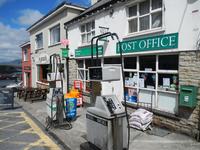 1. Fuel pumps on the street in Roundstone, Connemara
1. Fuel pumps on the street in Roundstone, Connemara
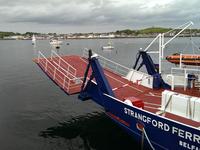 2. Strangford Lough, Northern Ireland
2. Strangford Lough, Northern Ireland
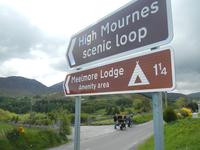 3. High Mournes Scenic Loop, Northern Ireland
3. High Mournes Scenic Loop, Northern Ireland
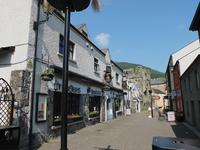 4. Carlingford on the Cooley Peninsula, County Louth
4. Carlingford on the Cooley Peninsula, County Louth
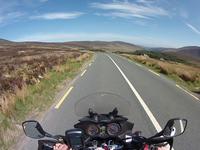 5. The Wicklow Mountains
5. The Wicklow Mountains
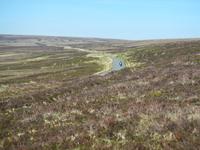 6. The R115 through the Wicklow Mountains
6. The R115 through the Wicklow Mountains
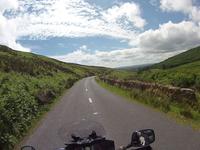 7. The R668 leading to The Vee, County Tipperary
7. The R668 leading to The Vee, County Tipperary
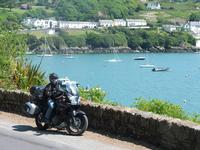 8. Glandore, County Cork
8. Glandore, County Cork
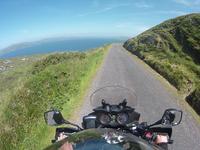 9. Road to Mizen Head, County Cork
9. Road to Mizen Head, County Cork
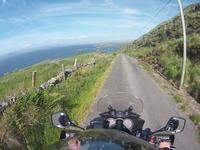 10. The Ring of Beara, County Cork
10. The Ring of Beara, County Cork
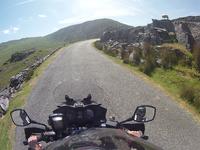 11. Healy Pass, Beara Peninsula
11. Healy Pass, Beara Peninsula
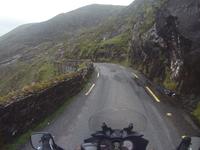 12. The Connor Pass, Dingle Peninsula
12. The Connor Pass, Dingle Peninsula
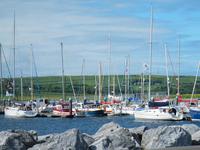 13. Dingle Harbour, County Kerry
13. Dingle Harbour, County Kerry
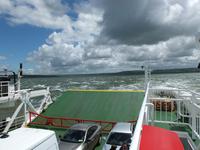 14. Ferry across the River Shannon
14. Ferry across the River Shannon
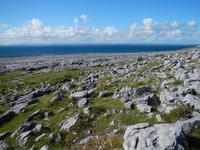 15. The Burren, County Clare
15. The Burren, County Clare
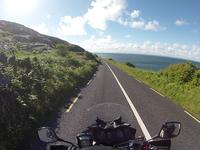 16. The R477 coastal road in the Burren, County Clare
16. The R477 coastal road in the Burren, County Clare
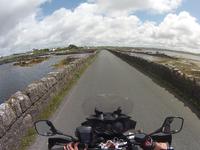 17. Causeway on the R374 in Connemara
17. Causeway on the R374 in Connemara
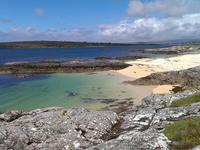 18. Coral Beach at Carraroe, Connemara, County Galway
18. Coral Beach at Carraroe, Connemara, County Galway
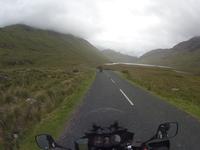 19. The R335 Doolough Pass in Connemara
19. The R335 Doolough Pass in Connemara
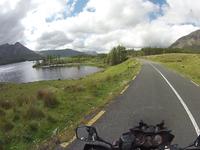 20. Valley in Connemara
20. Valley in Connemara
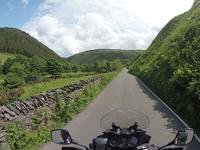 21. Road on the Isle of Man
21. Road on the Isle of Man
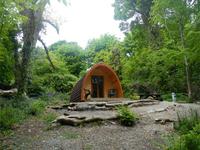 22. Camping pod at Castle Ward campsite, Strangford Lough, Northern Ireland
22. Camping pod at Castle Ward campsite, Strangford Lough, Northern Ireland
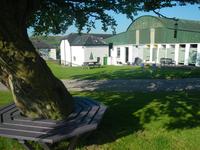 23. Slane Farm campsite, County Meath
23. Slane Farm campsite, County Meath
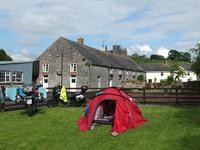 24. OBriens Campsite at the foot of the Rock of Cashel
24. OBriens Campsite at the foot of the Rock of Cashel
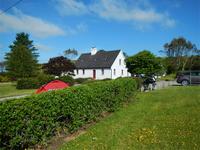 25. Meadow Campsite, Glandore, County Cork
25. Meadow Campsite, Glandore, County Cork
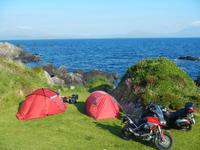 26. Wave Crest Campsite, Caherdaniel, County Kerry
26. Wave Crest Campsite, Caherdaniel, County Kerry
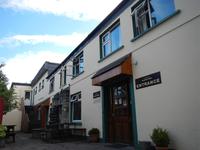 27. The Railway Hostel, Killarney, County Kerry
27. The Railway Hostel, Killarney, County Kerry
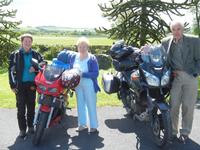 28. Nora and Jim Sheahan of Millstream House B&B, Listowel
28. Nora and Jim Sheahan of Millstream House B&B, Listowel
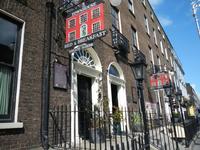 29. The Townhouse B&B, Dublin
29. The Townhouse B&B, Dublin
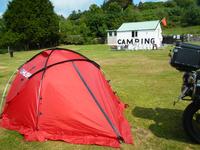 30. Laxey Campsite, Isle of Man
30. Laxey Campsite, Isle of Man
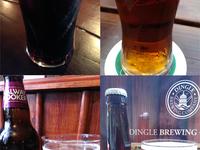 31. A selection of Irish ales
31. A selection of Irish ales
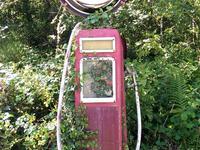 32. Fuel pump of a different kind, near Lauragh, Beara Peninsula
32. Fuel pump of a different kind, near Lauragh, Beara Peninsula
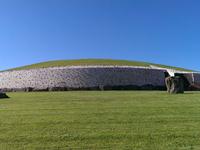 33. Newgrange Neolithic Monument, County Meath
33. Newgrange Neolithic Monument, County Meath
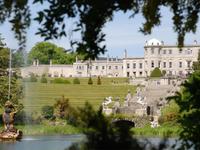 34. Powerscourt House and Gardens, County Wicklow
34. Powerscourt House and Gardens, County Wicklow
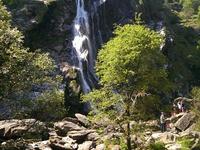 35. Powerscourt Waterfall, County Wicklow
35. Powerscourt Waterfall, County Wicklow
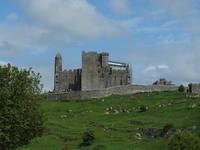 36. The Rock of Cashel, County Tipperary
36. The Rock of Cashel, County Tipperary
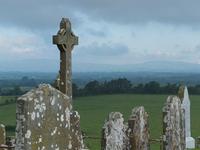 37. View from the Rock of Cashel, County Tipperary
37. View from the Rock of Cashel, County Tipperary
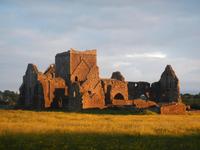 38. Hore Abbey at Sunset, Cashel, County Tipperary
38. Hore Abbey at Sunset, Cashel, County Tipperary
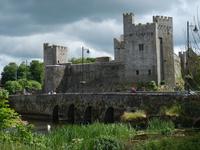 39. Cahir Castle, County Tipperary
39. Cahir Castle, County Tipperary
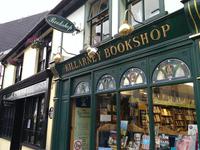 40. Killarney, County Kerry
40. Killarney, County Kerry
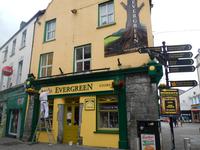 41. Shop front in Galway
41. Shop front in Galway
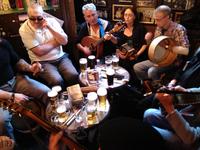 42. Every night is a traditional Irish music night in O'Donoghue's, Dublin
42. Every night is a traditional Irish music night in O'Donoghue's, Dublin
 43. Trinity College Old Library, Dublin
43. Trinity College Old Library, Dublin
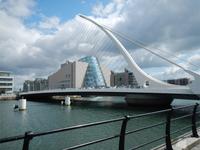 44. Bridge over the River Liffey, Dublin
44. Bridge over the River Liffey, Dublin
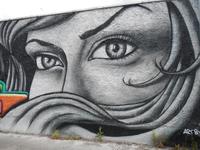 45. Street graffiti on Dublin's quayside
45. Street graffiti on Dublin's quayside
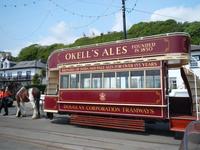 46. Horse-drawn tram in Douglas, Isle of Man
46. Horse-drawn tram in Douglas, Isle of Man
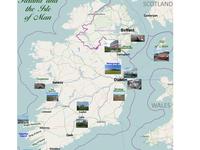 Map with points of interest
Map with points of interest